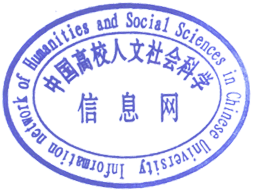关 键 词 :兴;移情;物我同一学科分类:文学--文艺美学
我国的“兴”和利普斯的移情说都追求一种物我同一、人情与物理相通的状态,朱光潜曾将二者互相阐释。但这两个诞生于不同文化背景下的概念,既有相通之处,也有极大的区别。在物我关系上,天人感应传统下的“兴”是立于物我平等的基础上,而主客对立传统下的移情,物我则不是平等的;在观物方式上,“兴”是以物观物,物与人地位平等,“移情”是以我观物,我的主体价值被彰显,物的独立性则被取消;在主体活动上,“兴”的主体是受动的,主体与对象之间是由物及我、由我及物的双向互动,“移情”的主体具有极高的主动性,主体与对象之间是单向的移注活动。
Both the "Xing" in our country and Lipps' theory of empathy pursue a state where the self and the object are the same and human feelings are connected with the physical. Zhu Guangqian once explained the two to each other. However, these two concepts, which originated from different cultural backgrounds, share some similarities as well as significant differences. In terms of the relationship between the object and the self, the "xing" under the tradition of the interaction between heaven and man is based on the equality of the object and the self, while the empathy under the tradition of the opposition between the subject and the object is not equal. In terms of the way of observing objects, "Xing" views objects from the perspective of objects, with the status of objects and people being equal. "Empathetic" views objects from the perspective of oneself, highlighting one's own subjective value while eliminating the independence of objects. In terms of the subject activity, the subject of "xing" is the recipient, and the interaction between the subject and the object is a two-way one from the object to me and from me to the object. The subject of "empathetic" has extremely high initiative, and the interaction between the subject and the object is a one-way shifting activity.

